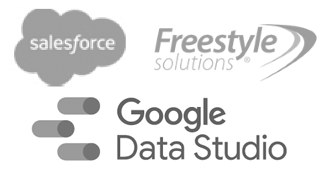A popular approach for database marketing architects is to integrate “best of breed” software applications together – with the assumption that the whole is greater than the sum of its parts. For example, many organizations are integrating sales and marketing customer databases. Technology folks may promise this can be done “seamlessly” (in fact, “seamless” has got to be the most favorite word among software vendors). It sounds too good to be true, and in some cases it is just that. If you are not careful, your best intentions can look better on paper than in practice. Here is why.
Precision: Seamless integration assumes precise data definitions, used interchangeably between applications. Does each customer category in your marketing system (“big spender”) translate exactly to the customer categories in your accounting system (e.g. “good credit”). For example, Wise Guys supports MultiChannel Order Manager (MOM), which provides automated exports of sales transactions to Quickbooks – a key functionality. However, we recommend waiting to use the automated export to Quickbooks until 6 months after posting (and reviewing) results manually. The 6-month learning curve allows mistakes to rear their head, so they can be fixed before the automated approach begins.
Timing: Seamless integration approaches attempt to display “real time” views of customer transactions. Often, however, they may be no better than “near real time”, or completely out of synch. For instance, your payment processing function may lag behind the phone or mail order system that generated the order. For most direct marketing purposes, we have found that “near real time” is sufficient. One exception would be when marketing and order processing need to be tightly linked, as in a web display of cross-sell items for web shoppers.
Duplicate Updates: If you have duplicate customer records in any one of your shared databases, your “seamless” update process may risk incorrect updates to matching records. We recommend considering a “fire wall” approach to marketing automation.
A “semi-automated less-than-completely-seamless” integration design is often preferable to a completely automated one for this reason: manual intervention (with trained eyeballs) at various points in your database update process provides an important quality control check. Like a firewall, this prevents a single mistake from growing and corrupting an entire database. For instance, your refresh programs from a source database may alter a perfectly good mailing address with one that is not deliverable.
 Professor’s Corner:
Professor’s Corner:
For seamless integration in the imperfect world of data matching, your decision may boil down to how much matching accuracy are you willing to pay for?
For 95-98% accuracy, you can implement the Match Up program from Melissa Data – at around $4,800 including customization and installation. For 85-95% accuracy, our WiseGuys program is available at a much lower price point, and also has the advantage of performing Householding and Merge/Purge. The latter function can merge transactions from your duplicate customer to the surviving customer in your data matching process (and then purge the duplicate). The obvious advantage here is that you will now have one complete view of your customer, with all transactions attached.
As always, call today to take advantage of our free 15 minute consulting session, “The Professor is in” at 703.941.8109.









